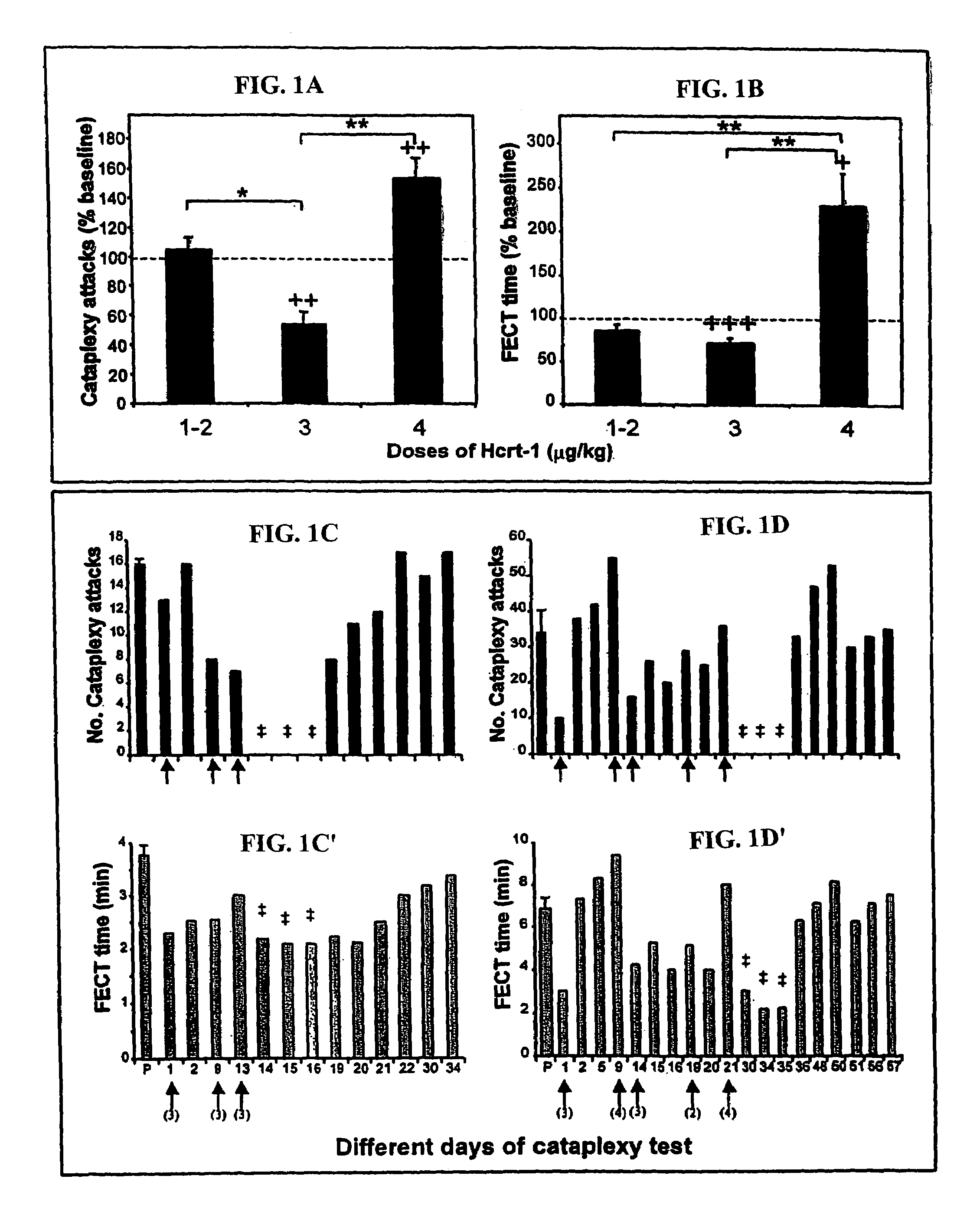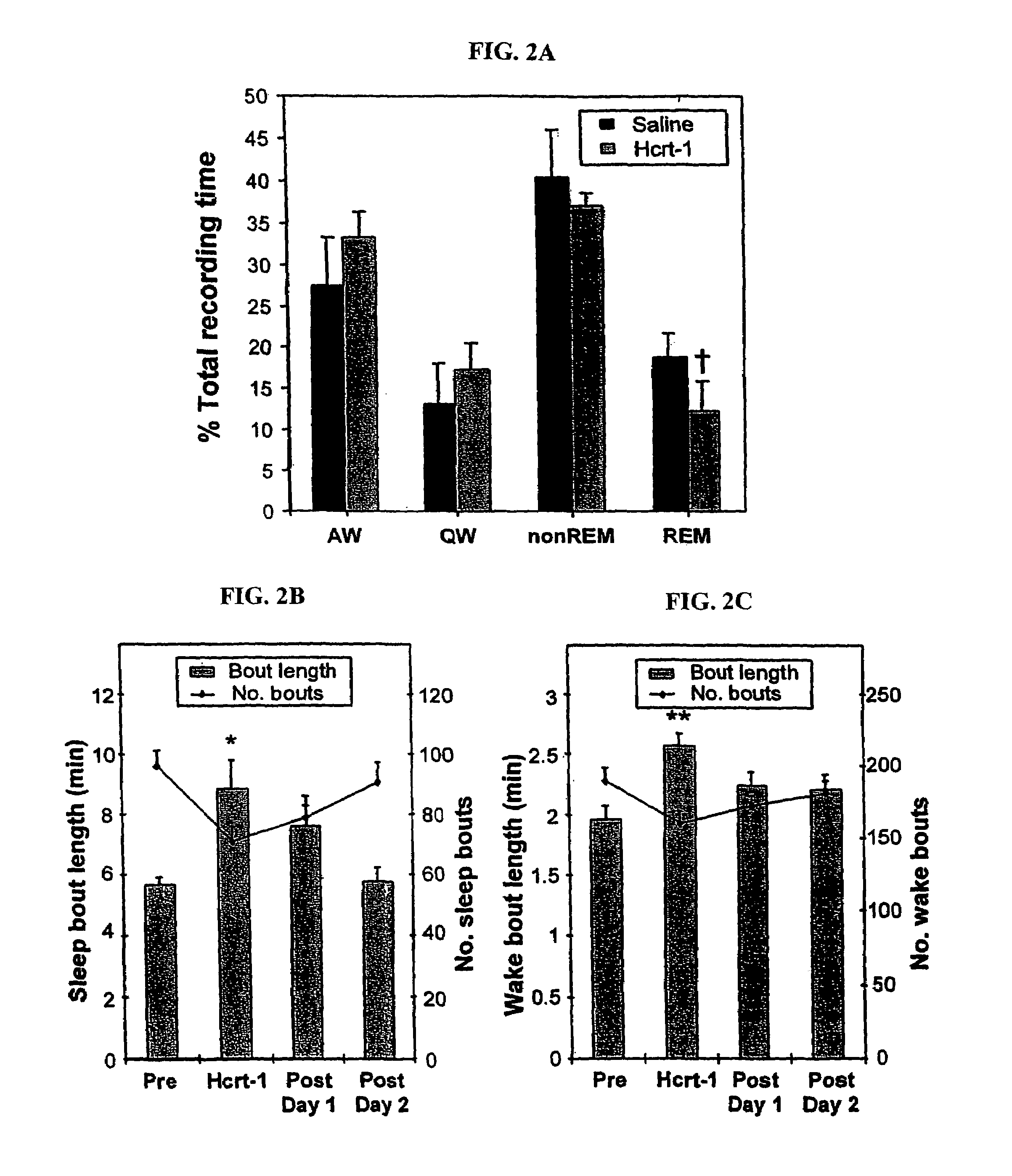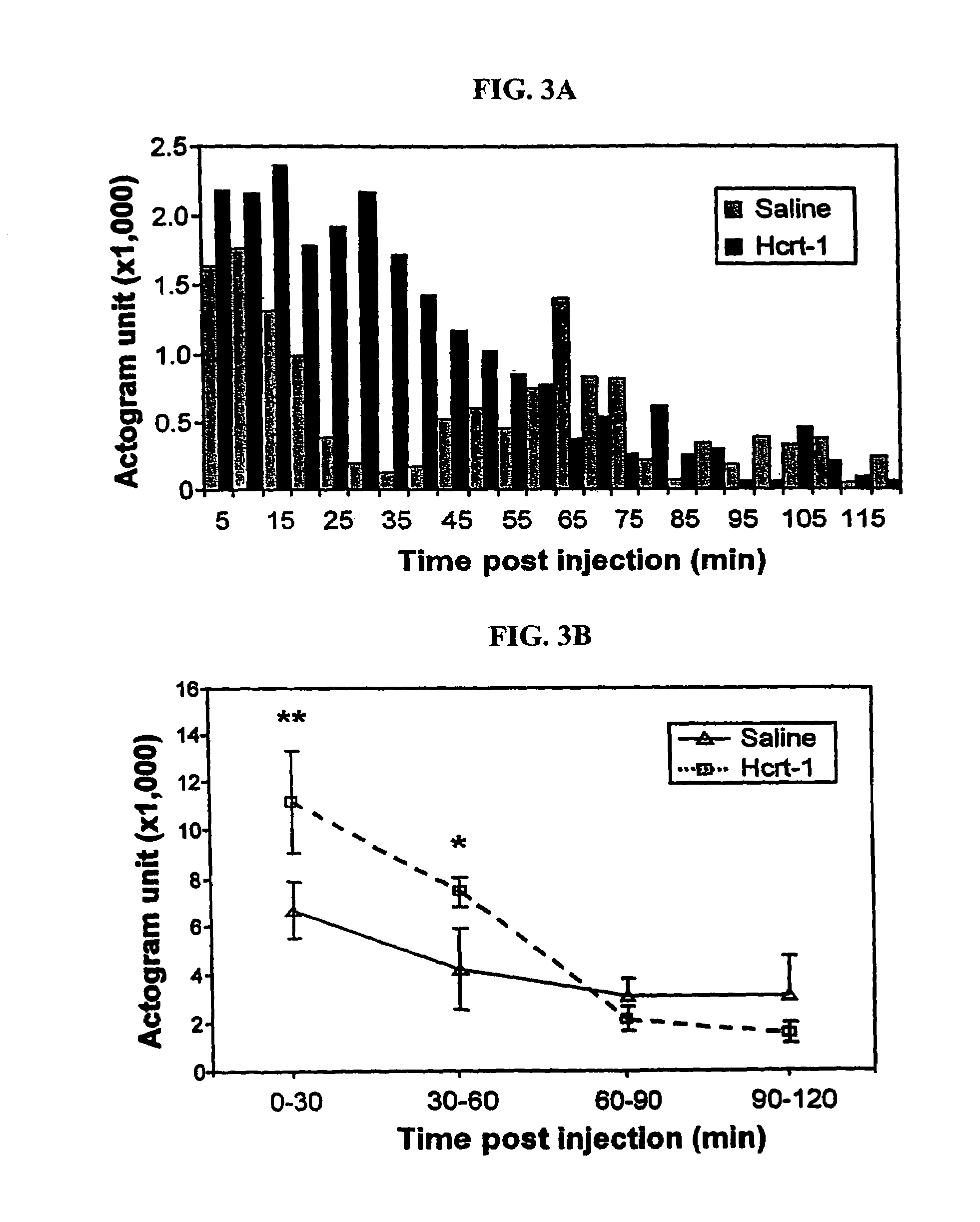Systemic administration of Hypocretin-1
- Summary
- Abstract
- Description
- Claims
- Application Information
AI Technical Summary
Benefits of technology
Problems solved by technology
Method used
Image
Examples
example 1
[0187]Changes in Cataplexy after Hcrt-1 Treatment
[0188]Hcrt-1 administration had a significant effect on cataplexy in a dose dependent manner (number of cataplectic attacks, pa). The 3 μg / kg dose produced a significant (pb). The 4 μg / kg dose of Hcrt-1 significantly increased the severity of cataplexy compared to saline control (p<0.01, df=7; t-test) and significantly increased the FECT time (p<0.05, df=7; t-test).
[0189]Two of the 3 dogs treated with repeated doses of Hcrt-1 went for 3 or more days without any cataplexy after the administration of 3–5 doses of Hcrt-1 (FIGS. 1c and 1d). A total absence of cataplexy had never been observed for even one day in any of the 3 dogs in 35 consecutive previous baseline tests in each animal. During the period without cataplexy the animals showed normal feeding during FECTs. The time taken to finish the food was significantly reduced due to the absence of cataplexy attacks (pc′ and 1d′).
example 2
[0190]Effect of Hcrt-1 on Sleep-Wake Periods and Activity Level
[0191]Polygraphic recording of sleep-wake parameters showed that the same dose of Hcrt-1 that induced a reduction in cataplexy produced a significant reduction (pa).
[0192]Actigraph measurements were used to calculate the duration of sleep and waking states for the nights following injection. First, comparisons of actigraphic measurements and polygraphically recorded sleep states were made and used to determine thresholds for distinguishing sleep and wake periods. Then wake and sleep state periods were quantified starting 2 hrs following administration. We found that after a single dose of Hcrt-1 the mean duration of both sleep periods and wake periods increased. These effects lasted for more than 24 hrs (pb, 2c). The total duration of sleep was increased after Hcrt-1 as compared to pre-drug levels, but not significantly (p=0.055, df=5; t-test). During the periods of cataplexy suppression following repeated Hcrt-1 doses, ...
example 3
[0194]Solid-Phase Radioimmunoassay (RIA) for Hypocretin (Hcrt-1)
[0195]In order to assess the effect of the intravenous Hcrt-1 injection on central levels of the compound, cerebrospinal fluid (CSF) and blood serum was collected and analyzed after infusion of Hcrt-1. In these studies, Hcrt-1 was injected intravenously as in the behavioral studies into two Doberman pinschers, one narcoleptic, and one control that had been anesthetized with Fluothane anesthesia. Saline was injected in a third dog, a non-narcoleptic control. Prior to injection and at 15, 30 min and one hour intervals after injection, CSF was collected from the cisterna magna with a spinal needle and then quickly frozen at −20. Hypocretin was extracted from 0.5–1 ml samples with reverse a phase SEP-PAK C18 column. An 125I Hcrt-1 radioimmunoassay was used to measure levels in reconstituted aliquots (described below).
[0196]In commonly used RIA procedures the competition between radiolabeled and unlabeled sample-derived pept...
PUM
| Property | Measurement | Unit |
|---|---|---|
| Time | aaaaa | aaaaa |
| Time | aaaaa | aaaaa |
| Dimensionless property | aaaaa | aaaaa |
Abstract
Description
Claims
Application Information
 Login to View More
Login to View More - R&D
- Intellectual Property
- Life Sciences
- Materials
- Tech Scout
- Unparalleled Data Quality
- Higher Quality Content
- 60% Fewer Hallucinations
Browse by: Latest US Patents, China's latest patents, Technical Efficacy Thesaurus, Application Domain, Technology Topic, Popular Technical Reports.
© 2025 PatSnap. All rights reserved.Legal|Privacy policy|Modern Slavery Act Transparency Statement|Sitemap|About US| Contact US: help@patsnap.com



